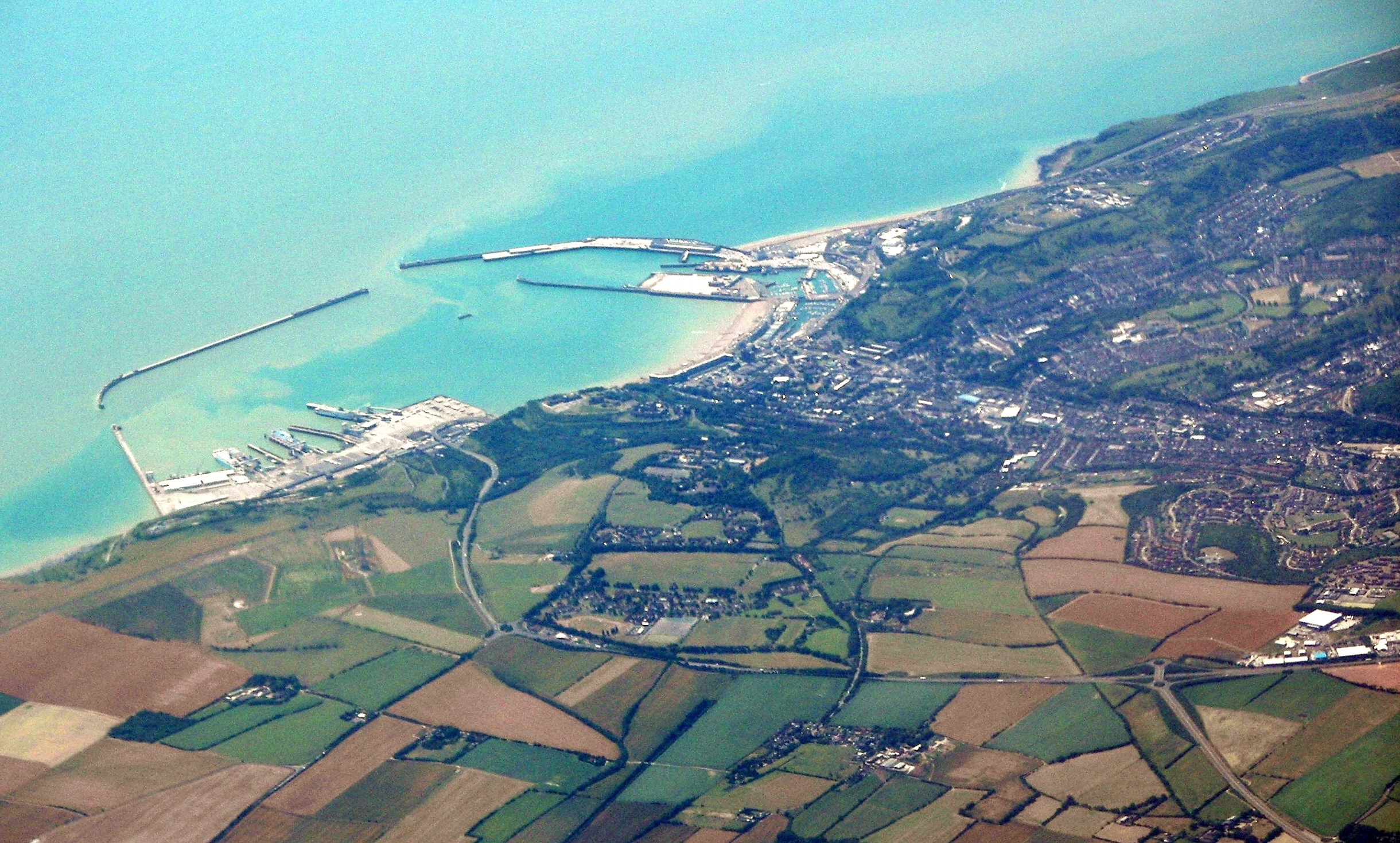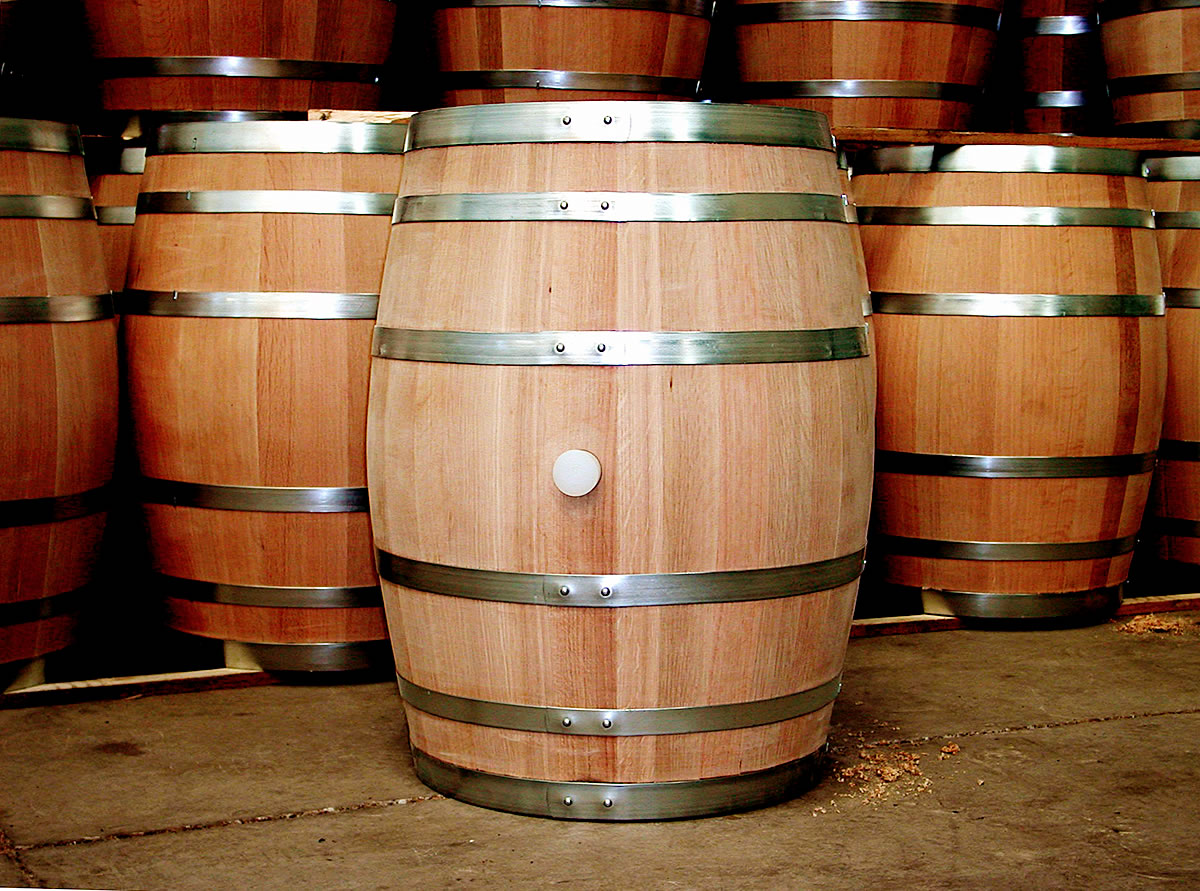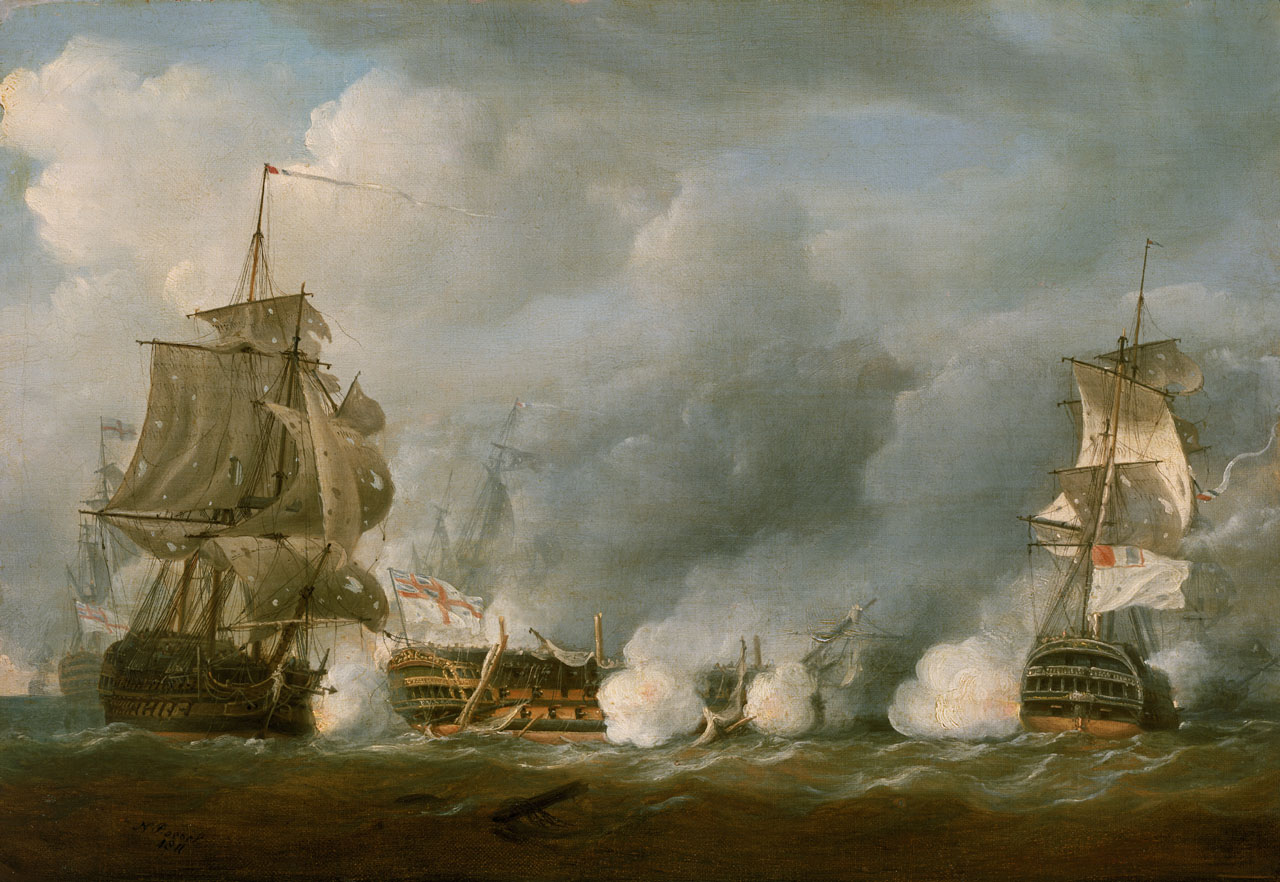|
State Funeral Of Horatio Nelson
Vice-Admiral Horatio Nelson, 1st Viscount Nelson, was given a State funerals in the United Kingdom, state funeral in London on 9 January 1806. It was the first to be held at St Paul's Cathedral and was the grandest of any non-royal person to that date. Nelson was shot and killed on 21 October 1805, aged 47, aboard his flagship, , during the Battle of Trafalgar, part of the Napoleonic Wars. The successful outcome of the battle against a larger Franco-Spanish fleet, secured British naval supremacy and ended the threat of a French invasion of the United Kingdom. Nelson's previous victories meant that he was revered as a national hero and news of his death was met with near universal shock and mourning. The scale of his funeral was not only an expression of public sentiment, but also an attempt by the British Government to improve the perception of its prosecution of the war. Background The breakdown of the year-long peace that followed the Treaty of Amiens led to the United Kingdo ... [...More Info...] [...Related Items...] OR: [Wikipedia] [Google] [Baidu] |
Augustus Charles Pugin
Augustus Charles Pugin (born Auguste-Charles Pugin; 1762 – 19 December 1832) was a French-born British artist, draughtsman and writer. He was born in Paris to a Swiss father, and Pugin himself was to spend most of his life in England. Pugin left France during the French Revolutionary Wars period for unclear reasons about 1798 and later entered the Royal Academy Schools in London, England to improve his skills. Shortly afterwards he obtained a position as an architectural draughtsman with the architect John Nash. After considering and abandoning a career in architecture Pugin married and settled on a career as a commercial artist working primarily for publishers of illustrated books. He was a skilful watercolourist as well as an accomplished draftsman. Drawings Pugin produced views of London, jointly creating the illustrations for the '' Microcosm of London'' (1808–1811) published by Rudolph Ackermann, followed by plates for Ackermann's books about Westminster Abbey, Oxfor ... [...More Info...] [...Related Items...] OR: [Wikipedia] [Google] [Baidu] |
Channel Ports
The Channel Ports are seaports in southern England and northern France, which allow for short crossings of the English Channel. There is no formal definition, but there is a general understanding of the term. Some ferry companies divide their routes into "short" and "long" crossings. The broadest definition might be from Plymouth east to Kent and from Roscoff to Zeebrugge although a tighter definition would exclude ports west of Newhaven and Dieppe. A historic group of such ports is the Cinque Ports of south-east England, most of which have ceased to be commercial ports. Ports England The ports vary in size and their relative importance has fluctuated during recent history. Dover has established a lead in the cross-Channel ferry routes through its geographic position and development of its facilities and hinterland. This business has been sustained despite competition from the Channel Tunnel. Other minor ports in Kent and Sussex have retained some trade but these tend to be sin ... [...More Info...] [...Related Items...] OR: [Wikipedia] [Google] [Baidu] |
Queue (hairstyle)
A queue or cue is a hairstyle historically worn by the Jurchen people, Jurchen and Manchu people, Manchu peoples of Manchuria, and was later required to be worn by male subjects of Qing dynasty, Qing China. The top of the scalp is shaved and the back portion of hair on the head is often grown long and is Braid (hairstyle), braided. The distinctive hairstyle led to its wearers being targeted during anti-Chinese sentiment, anti-Chinese riots in History of Chinese Australians, Australia and the History of Chinese Americans, United States. The edict that Han Chinese men and others under Manchu rule give up their traditional hairstyles and wear the queue, the ''Tifayifu'', was met with resistance, although opinions about the queue did change over time. Han women were never required to wear their hair in the traditional women's Manchu style, liangbatou, although that too was a symbol of Manchu identity. Predecessors and origin The queue hairstyle predates the Manchus. The Chinese w ... [...More Info...] [...Related Items...] OR: [Wikipedia] [Google] [Baidu] |
Cask
A barrel or cask is a hollow cylindrical container with a bulging center, longer than it is wide. They are traditionally made of wooden staves and bound by wooden or metal hoops. The word vat is often used for large containers for liquids, usually alcoholic beverages; a small barrel or cask is known as a keg. Barrels have a variety of uses, including storage of liquids such as water, oil, and alcohol. They are also employed to hold maturing beverages such as wine, cognac, armagnac, sherry, port, whiskey, beer, arrack, and sake. Other commodities once stored in wooden casks include gunpowder, meat, fish, paint, honey, nails, and tallow. Modern wooden barrels for wine-making are made of English oak (''Quercus robur''), white oak (''Quercus petraea''), American white oak (''Quercus alba''), more exotic is mizunara oak ('' Quercus crispula''), and recently Oregon oak ('' Quercus garryana'') has been used. Someone who makes traditional wooden barrels is called a coope ... [...More Info...] [...Related Items...] OR: [Wikipedia] [Google] [Baidu] |
William Beatty (surgeon)
Sir William Beatty (April 1773 – 25 March 1842) was an Irish surgeon who served in the Royal Navy. Born in Derry, Ireland, he joined as a surgeon's mate in 1791 at the age of 18. He is best known as the ship's surgeon aboard during the Battle of Trafalgar, at which he witnessed the death of Admiral Horatio Nelson, and for writing an account of that battle – '' Authentic Narrative of the Death of Lord Nelson''. Biography Early life and education William Beatty was the eldest son of James Beatty, an officer in the Irish Revenue Service, and Anne Smyth. He was born in the Waterside district of Derry, the eldest of four sons and two daughters. No records survive of his education, though he attended a local school, most likely Foyle College, before beginning his medical studies. He may have been apprenticed to his uncle George Smyth, a half-pay naval surgeon in nearby Buncrana, before studying at either the University of Glasgow or at "The United Hospitals of the Borough" - ... [...More Info...] [...Related Items...] OR: [Wikipedia] [Google] [Baidu] |
Boatswain
A boatswain ( , ), bo's'n, bos'n, or bosun, also known as a deck boss, or a qualified member of the deck department, or the third hand on a fishing vessel, is the most senior Naval rating, rate of the deck department and is responsible for the components of a ship's Hull (watercraft), hull. The boatswain supervises the other members of the ship's deck department, and typically is not a watchstanding, watchstander, except on vessels with small crews. Additional duties vary depending upon ship, crew, and circumstances. History The word ''boatswain'' has been in the English language since approximately 1450. It is derived from late Old English language, Old English ''batswegen'', from ''bat'' (''boat'') concatenated with Old Norse language, Old Norse ''sveinn'' (''wikt:swain, swain''), meaning a young man, apprentice, a follower, Retinue, retainer or Servant (domestic), servant. Directly translated to modern Norwegian it would be ''båtsvenn'', while the actual crew title in Norwe ... [...More Info...] [...Related Items...] OR: [Wikipedia] [Google] [Baidu] |
Frigate
A frigate () is a type of warship. In different eras, the roles and capabilities of ships classified as frigates have varied. The name frigate in the 17th to early 18th centuries was given to any full-rigged ship built for speed and maneuverability, intended to be used in scouting, escort and patrol roles. The term was applied loosely to ships varying greatly in design. In the second quarter of the 18th century, what is now generally regarded as the 'true frigate' was developed in France. This type of vessel was characterised by possessing only one armed deck, with an unarmed deck below it used for berthing the crew. Late in the 19th century (British and French prototypes were constructed in 1858), a type of powerful ironclad warships was developed, and because they had a single gun deck, the term 'frigate' was used to describe them. Later developments in ironclad ships rendered the 'frigate' designation obsolete and the term fell out of favour. During the Second World War ... [...More Info...] [...Related Items...] OR: [Wikipedia] [Google] [Baidu] |
Cuthbert Collingwood, 1st Baron Collingwood
Vice Admiral Cuthbert Collingwood, 1st Baron Collingwood (26 September 1748 – 7 March 1810) was an admiral of the Royal Navy. Collingwood was born in Newcastle upon Tyne and later lived in Morpeth, Northumberland. He entered the Royal Navy at a young age, eventually rising from midshipman to lieutenant in the American Revolutionary War, where he saw action at the Battle of Bunker Hill during which he led a naval brigade. In the 1780s and 1790s Collingwood would participate in the French Revolutionary Wars, during which time he captained several ships and reached the rank of Post Captain. He took part in several key naval battles of the time, including the Glorious First of June and the Battle of Cape St Vincent. In 1799, he was promoted to rear-admiral and later vice-admiral, where he undertook a variety of command roles during the Napoleonic Wars, including serving as second in command of the British Fleet under Nelson at the Battle of Trafalgar. Following Nelson's death, C ... [...More Info...] [...Related Items...] OR: [Wikipedia] [Google] [Baidu] |
Sir Thomas Hardy, 1st Baronet
Vice-Admiral Sir Thomas Masterman Hardy, 1st Baronet, GCB (5 April 1769 – 20 September 1839) was a Royal Navy officer who served in the French Revolutionary and Napoleonic Wars. He took part in the Battle of Cape St. Vincent in February 1797, the Battle of the Nile in August 1798 and the Battle of Copenhagen in April 1801 during the French Revolutionary Wars. Hardy served as flag captain to Vice-Admiral Lord Nelson, and commanded HMS ''Victory'' at the Battle of Trafalgar in October 1805 during the Napoleonic Wars. Nelson was shot as he paced the decks with Hardy, and as he lay dying, Nelson's famous remark of "Kiss me, Hardy" was directed at him. Hardy went on to become First Naval Lord in November 1830 and in that capacity refused to become a Member of Parliament and encouraged the introduction of steam warships. Early life Born the second son of Joseph Hardy and Nanny Hardy (née Masterman) at Kingston Russell House in Long Bredy (or according to some sources in W ... [...More Info...] [...Related Items...] OR: [Wikipedia] [Google] [Baidu] |
Sharpshooter
A sharpshooter is one who is highly proficient at firing firearms or other projectile weapons accurately. Military units composed of sharpshooters were important factors in 19th-century combat. Along with " marksman" and "expert", "sharpshooter" is one of the three marksmanship badges awarded by the United States Army and the United States Marine Corps. The United States Navy and the United States Coast Guard use a ribbon with an attached "S" device to note a sharpshooter qualification. Military sharpshooter history American Revolutionary War and War of 1812 Some of the earliest mentions of rifling and sharpshooting units in the United States originate during around the American Revolutionary War and the War of 1812. During the 1777 battles of Saratoga, Continental Army officer Benedict Arnold strategically arranged for sharpshooter units to target enemy officers and artillery units. All such sharpshooters units were disbanded following the war's end in 1783, but they wer ... [...More Info...] [...Related Items...] OR: [Wikipedia] [Google] [Baidu] |
Cape Trafalgar
Cape Trafalgar (; ) is a headland in the Province of Cádiz in the southwest of Spain. The 1805 naval Battle of Trafalgar, in which the Royal Navy commanded by Admiral Horatio Nelson decisively defeated Napoleon's combined Spanish and French fleet, took place just off the cape. Cape Trafalgar lies on the shore of the Atlantic Ocean, northwest of the Strait of Gibraltar. The International Hydrographic Organization defines the western limit of the strait and the Mediterranean Sea as a line that joins Cape Trafalgar to the north with Cape Spartel to the south. The most prominent structure on the cape is a 34 m (112 ft) lighthouse, which totals 51 m (167 ft) above sea level), the ', which was first illuminated on 15 July 1862. Etymology The name is of Arabic origin, deriving either from ''Taraf al-Ghar'' ( 'cape of the cave/laurel'), or from ''Taraf al-Gharb'' ( 'cape of the west').Richard Burton''The Arabian Nights''(vol. 9)'s footnote 82 In both cases, ''taraf'' () means ... [...More Info...] [...Related Items...] OR: [Wikipedia] [Google] [Baidu] |










